Row Zambezi
From The Field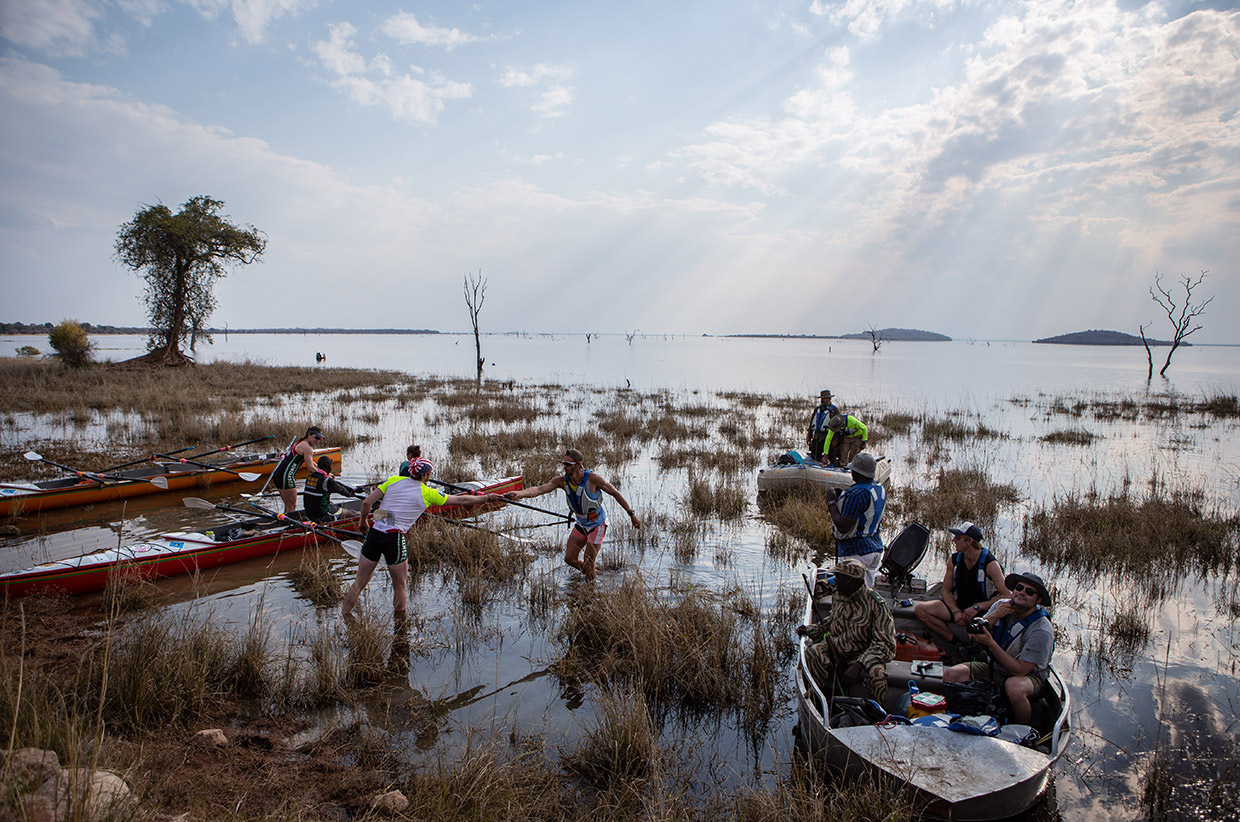 Photo: A. Benoit / RowZambezi / Aesthetic Sport
Photo: A. Benoit / RowZambezi / Aesthetic Sport
The largest tributary of the Zambezi, the Kafue river rises in the Congo-Zambezi watershed, a mere trickle among the shallow wetlands which characterise the plateau south of Zambia’s border with the Democratic Republic of the Congo.
Yet within 30 miles, it has formed a mature river, meandering to the south-east, eventually reaching the Kafue Flats. Here, a maze of channels and lagoons give way to a flood plain 150 miles long and 30 miles wide, home to many thousands of the Kafue Lechwe – a semi-aquatic antelope characterised by its long back legs which help it to move through the swamp. The flats are also home to one of the greatest concentrations and variety of species of birds, anywhere in the world. There are no roads here.
But the Kafue river is under increasing pressure.
The life-blood of Zambia in a very real sense, the river provides 40% of Zambia’s drinking water, nearly every business in Zambia is dependent on the Kafue in some way and some 2m people remain dependent on the Kafue for power and food.
But within a decade, climate change is forecast to reduce water yields from the Kafue basin by as much as 34%.
Raising awareness of the critical issues facing the Zambezi River Basin in addition to raising money to support WWF, a group of international rowers – RowZambezi – set out to explore 900km of the Kafue river and Kafue Flats.
It is the first time anyone has taken rowing boats through the Kafue National Park, and the Kafue Flats.
European Rowing Championships gold medallist, Zoë De Toledo, speaks to Sidetracked about RowZambezi and the Kafue River expedition.
You returned from the expedition a just few days ago – where are you now?
In Sweden. Having a holiday!
RowZambezi was set up in 2011, this being the third such expedition. How did it all come about?
It’s based around the Cook family really – Louise, known as RowZambezi Mama, was born and grew up in Zambia and works for the charity Village Water as a Trustee to provide sanitation and safe water to people living in rural areas of Zambia. That childhood connection and love of Africa combined with her passion for health is fundamentally what underpins it all.
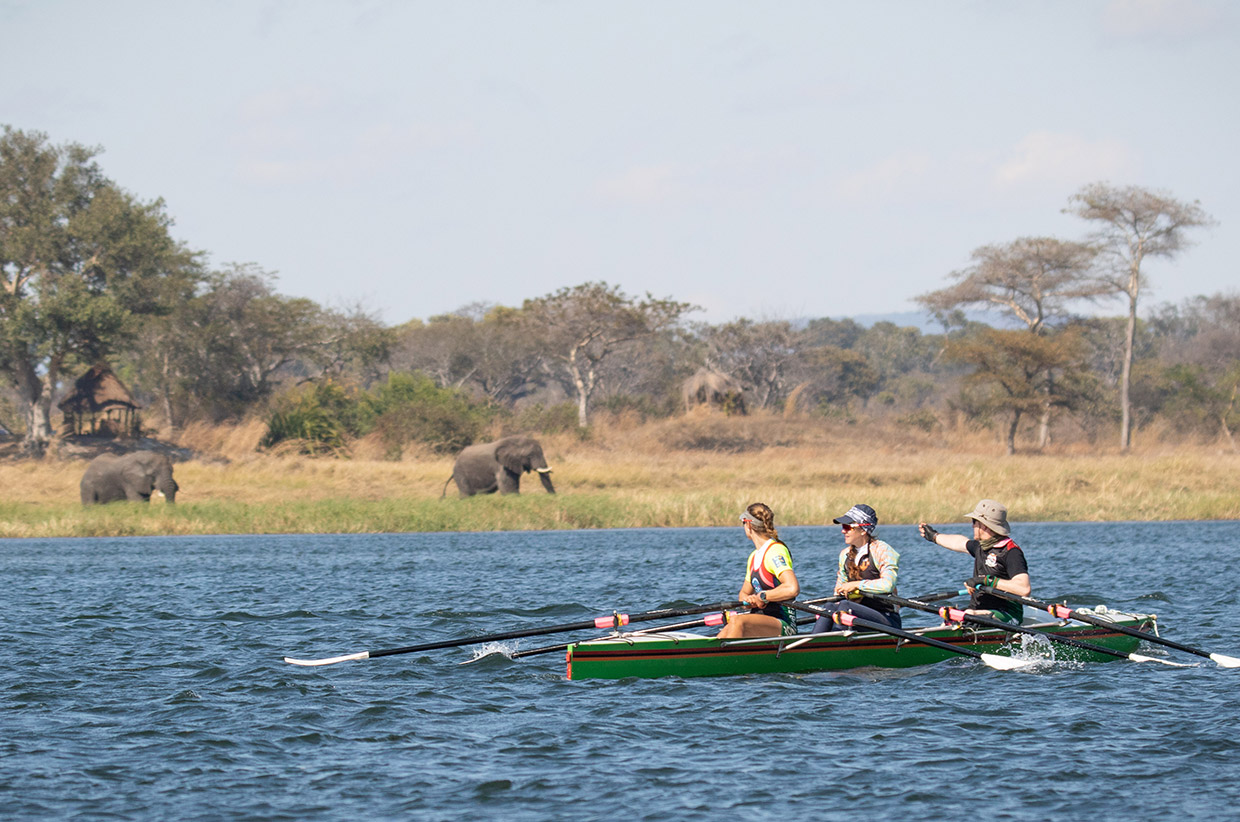
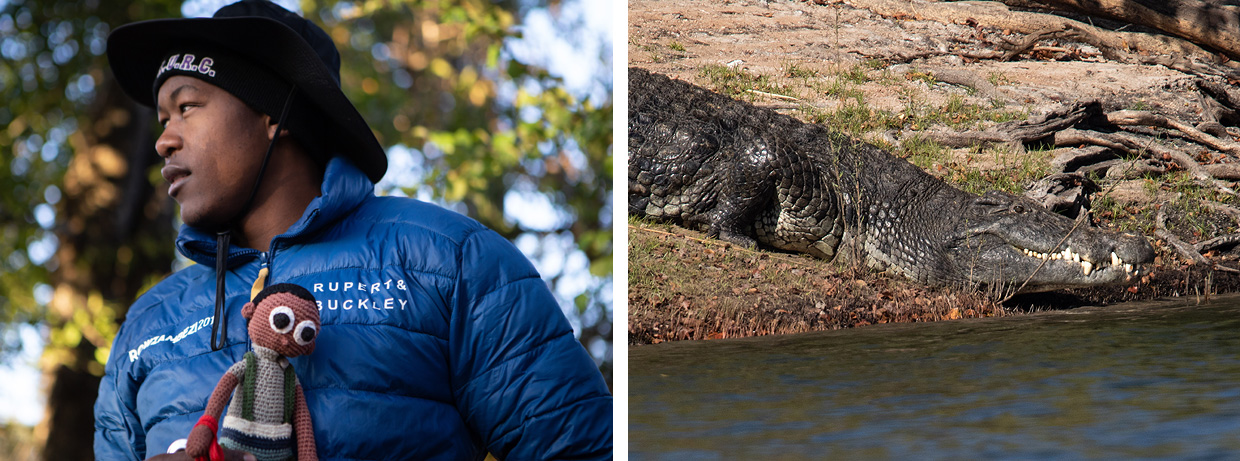
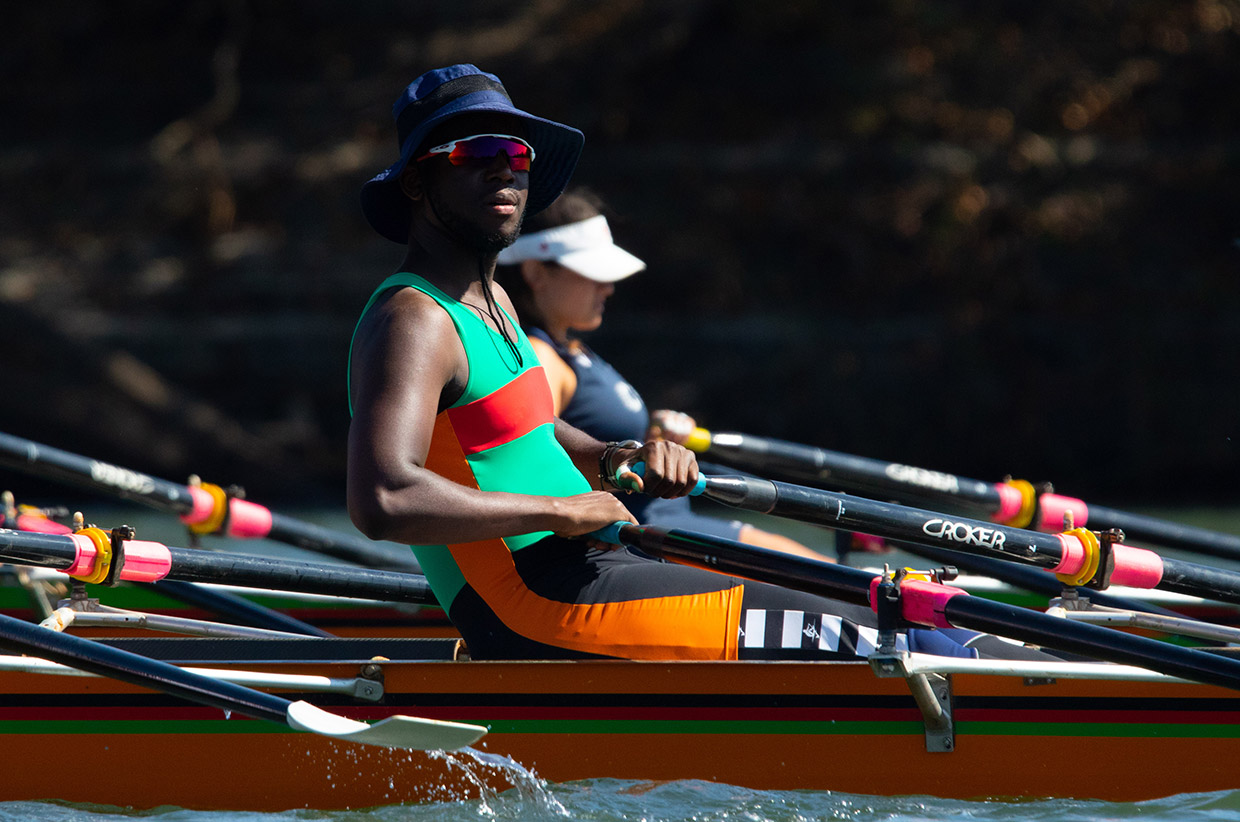
What are the greatest threats to the Kafue river basin and what was your impression of the state of the river?
The entire basin is under threat from the interruption of water flow by damming, industrial pollution, over fishing and excessive water extraction – it is a worrying picture. One of the key tasks for those on the expedition was to complete water quality assessments, testing specifically for pollutants like nitrates and phosphates.
Encouragingly the levels found were lower than we expected. Sanitation remains a massive issue however. There is growing awareness among rural communities of the health problems and diseases like cholera which result from way in which the river is used – but that awareness does not necessarily translate into a change in behaviour. Education and getting rural communities to buy into the changes required is as much of a challenge as putting in wells to supply clean drinking water.
Crocodiles and hippos are both present in the Kafue National Park which you travelled through – how did you manage the risk of encounters with these animals?
On land the crocodiles were scary. They kill a significant number of people every year. But on the water, the hippos were definitely the greater threat. A support boat with an armed park guide and look out as well as members of the rowing team who took turns, always travelled ahead of the rowers maintaining radio contact to warn of hippos – normally we could move across the river to avoid contact though there was one occasion on which the hippos were on both sides and moving into the middle which proved to be quite exciting. We had to zig zag constantly to avoid them.
At night camped close to the river, we often heard lions and elephants once walked straight through the camp knocking a tree onto one of the tents. It was a long procedure if you wanted to go to the loo in the night…
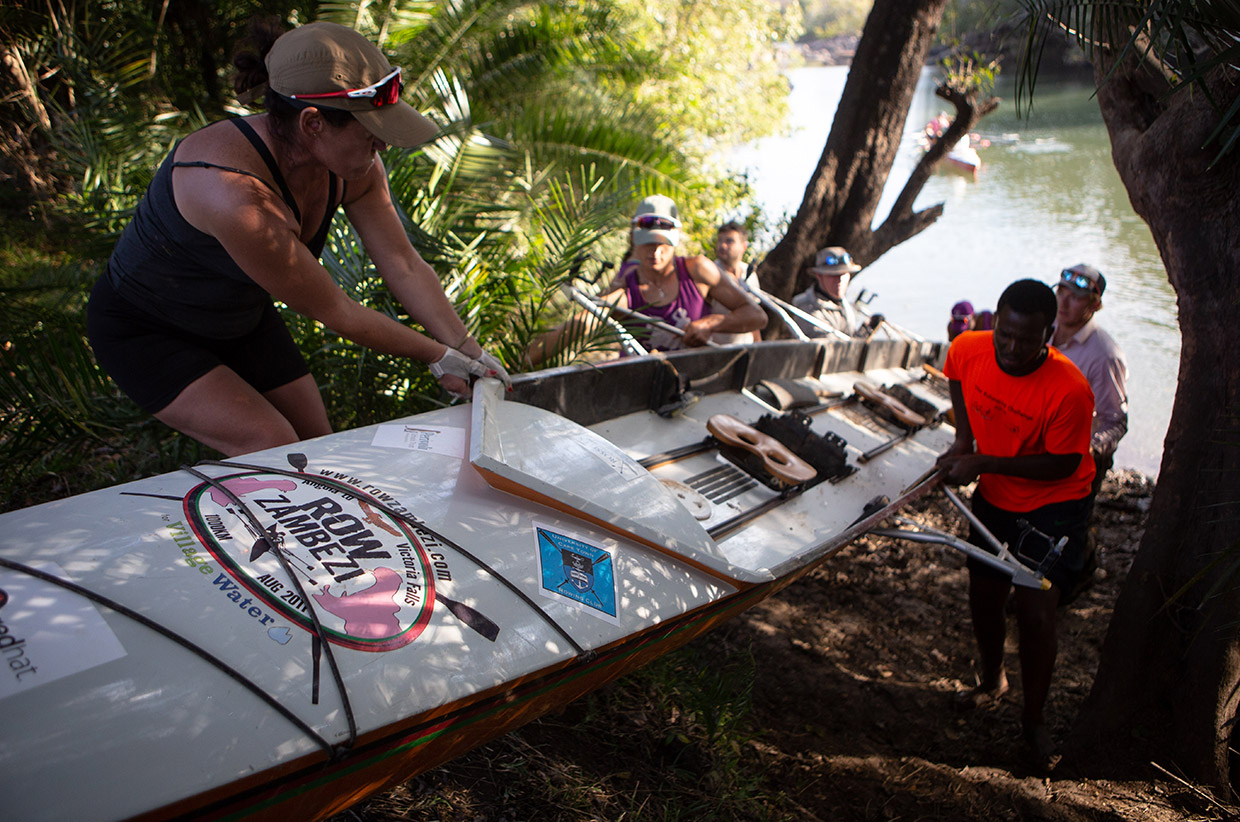
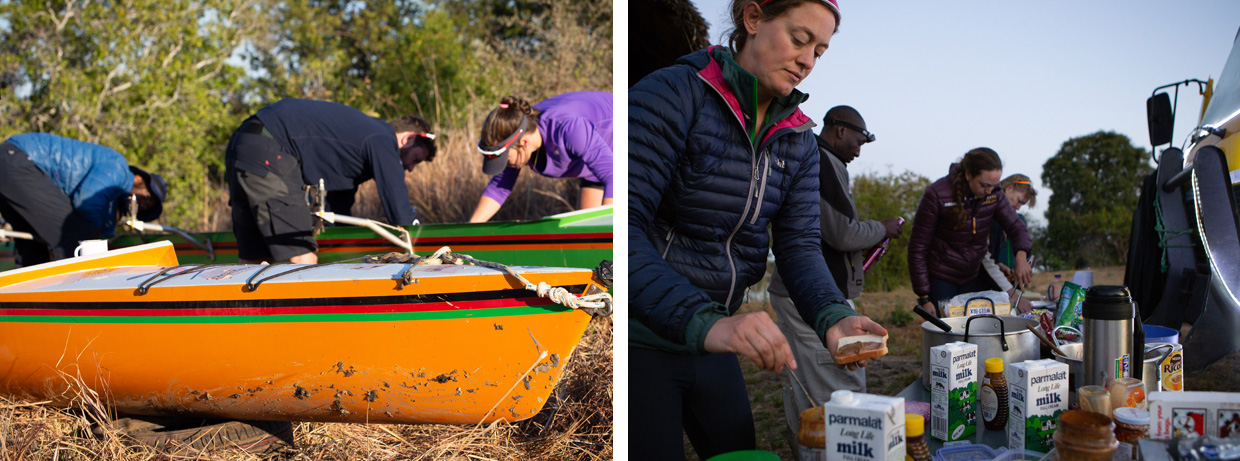
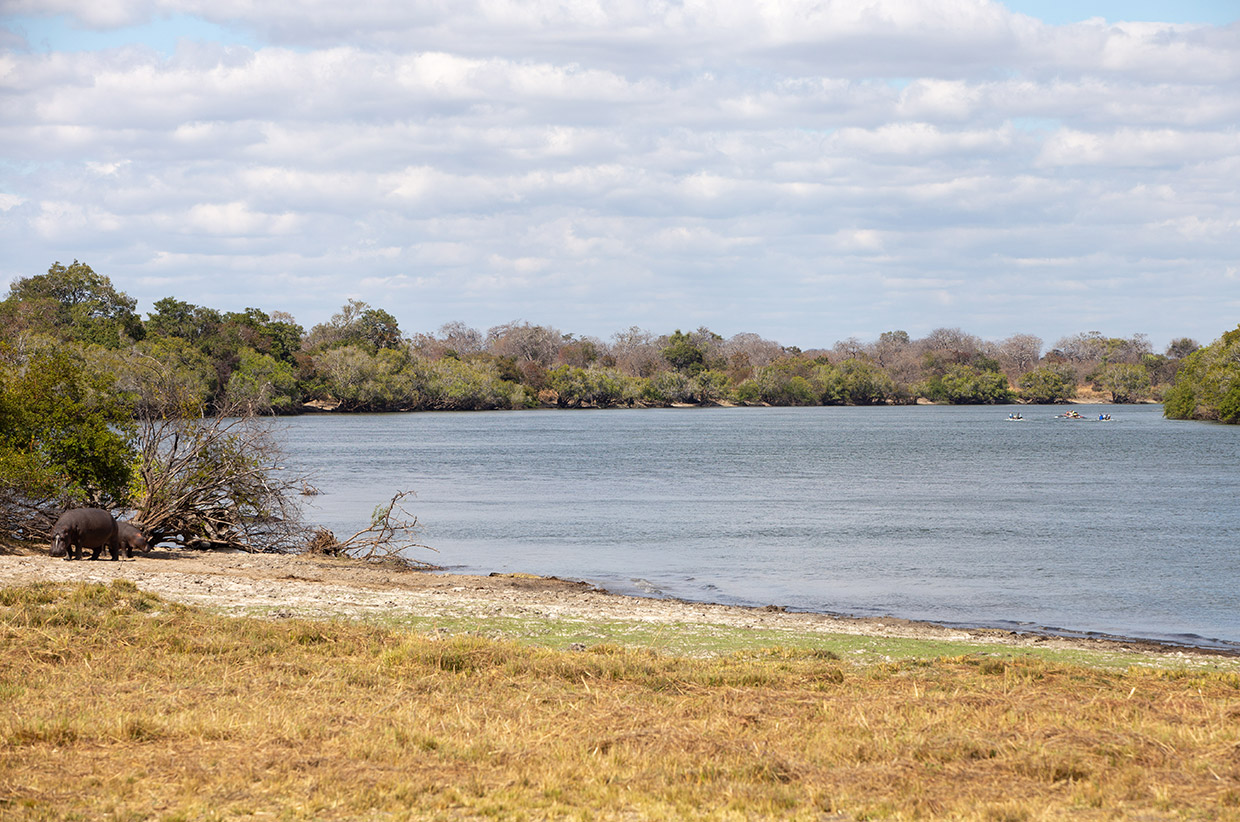
What did you find most difficult personally about the expedition?
The rowing was actually the most straightforward part of the trip. I think we were all well prepared for the challenges the river itself presented, the rapids and the wildlife, though there were some scary moments.
It was the logistics that proved challenging, things I hadn’t really thought about or expected like moving the boats around and getting the camps set up. But this was one of the things that impressed me most too. And the camps themselves were great – with a fire going and tents up, it very quickly felt like home.
Overland travel was probably what I found most difficult not to get frustrated with. Rowers took turns to have days off and getting from one camp to the next was often a slow, laborious and difficult task. I often thought I wish I could just row.
It was also very difficult to witness the level of poverty in which many people we encountered were living – it can be hard to reconcile your own life with what is normal for some. And it’s hard coming away, I miss everyone a lot.
One of the greatest challenges on expeditions can be the mix of personalities, differing objectives or motivations and the potential for clashes within the team. There were quite a few of you – 16 rowers in fact across three boats – was this problematic?
There were actually a lot more people involved, 16 rowers but also the support crew and extra rowers as well as many local people who were involved in various ways and the guides. So it was a really diverse mix of people but the dynamic was brilliant – in fact it was a real highlight of the trip, partly because of careful selection but inevitably it’s partly luck as well.
More than 50% of Zambia’s population live in the Kafue River Basin. How did local people react to your presence / journey?
They were fantastic. The level of interest in what we were doing was incredible and we often passed communities where people were cheering, the kids running along the bank, it was amazing.
RowZambezi has already raised $50,000 for clean water projects in the Zambezi River Basin – how can people help now the expedition is over?
RowZambezi will still accept donations of any value of course and it is still possible to ‘sponsor a km’ – every sponsor is entered into a prize draw and there are some great prizes.
As well as helping to fund the cost of the expedition, every penny raised goes to helping the WWF and World Rowing build the Kafue River and Rowing Centre, a global centre of excellence for fresh water research that is helping Zambia, Africa, and the world combat the threat of water shortages.
To find out more go to: Sponsor RowZambezi
Photos: A. Benoit / RowZambezi / Aesthetic Sport


